Weather APIs are valuable tools that enable developers and businesses to access regularly updated weather data. Developers use weather APIs to create weather alerts, mobile apps, and websites, while businesses rely on them for insights, event planning, and cost management.
There are both free and paid APIs available, and determining the best free weather API depends on individual requirements and preferences. Weatherstack stands out as one of the top free weather APIs, offering a paid option for users to customize their service according to their specific needs.

This article will discuss the ten best free weather APIs and paid weather APIs, including the popular open weather API.
1. Weatherstack
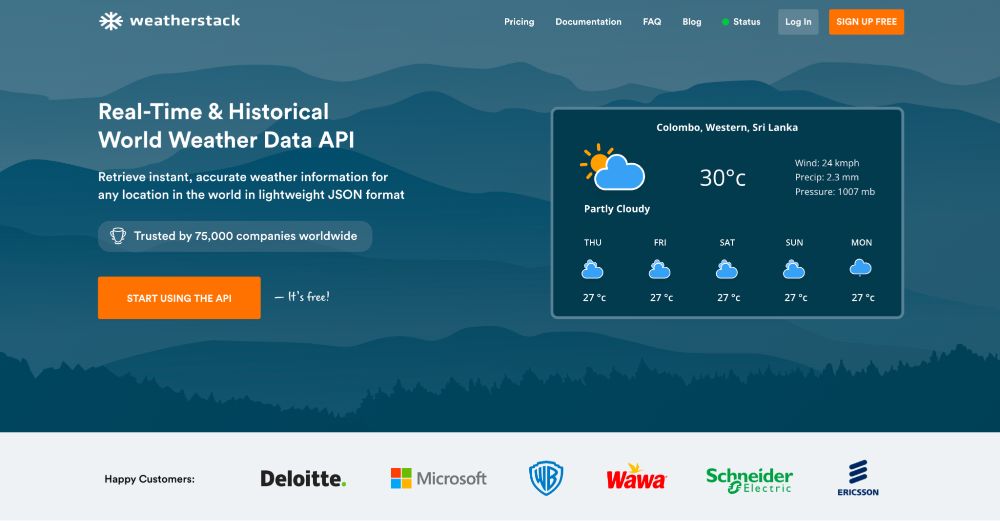
Weatherstack is an API developed by APILayer, a UK-based company that specializes in providing API services.
Weatherstack offers reliable and wide-ranging weather data in real-time, as well as historical and future forecasts. It primarily caters to developers who seek live weather data to integrate into their applications at a minimal cost.
Weatherstack’s REST API benefits from a scalable cloud infrastructure, which can handle billions of requests daily.
Moreover, to ensure the security of data transmission, all communication between the Weatherstack API and its users is safeguarded by industry-standard 256-bit HTTPS (SSL) encryption.
When it comes to Weatherstack API pricing, they provide a free plan that includes basic API functionality with a limit of 1000 monthly API lookups. Users have the option to upgrade their plan according to their specific requirements.
Also Read: Financing the Scandinavian Dream: A Comprehensive Guide
2. OpenWeatherMap
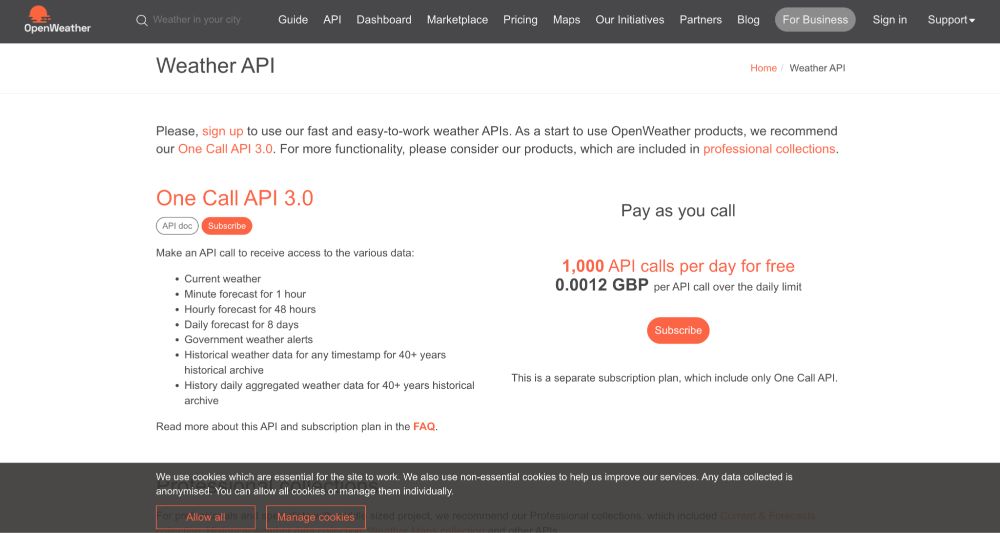
OpenWeather API is one of the most popular weather APIs which offers a wide range of data with global coverage in both free and paid options.
OpenWeatherMap offers real-time data on temperature, humidity, atmosphere pressure as well as wind speed. This API can be recommended for developers looking for in-depth data for their applications.
The free option of OpenWeatherMap grants access to the 5 days/3 hour forecast which allows up to 60 calls per minute and up to 1000 calls per day, as well as weather alerts and a weather map.
3. Tomorrow.io

Tomorrow.io API, previously known as the Climacell API, is widely used for applications that require more accurate data. It is being used by popular companies such as Uber, AWS, Ford, etc., as it offers various types of reliable data and helps to avoid costly weather disruptions.
Some of the location-specific data that Tomorrow.io offers include weather (past, present, and future up to 14 days), air quality, and fire index. Tomorrow.io offers free signup, and users can upgrade as required.
4. Weatherbit
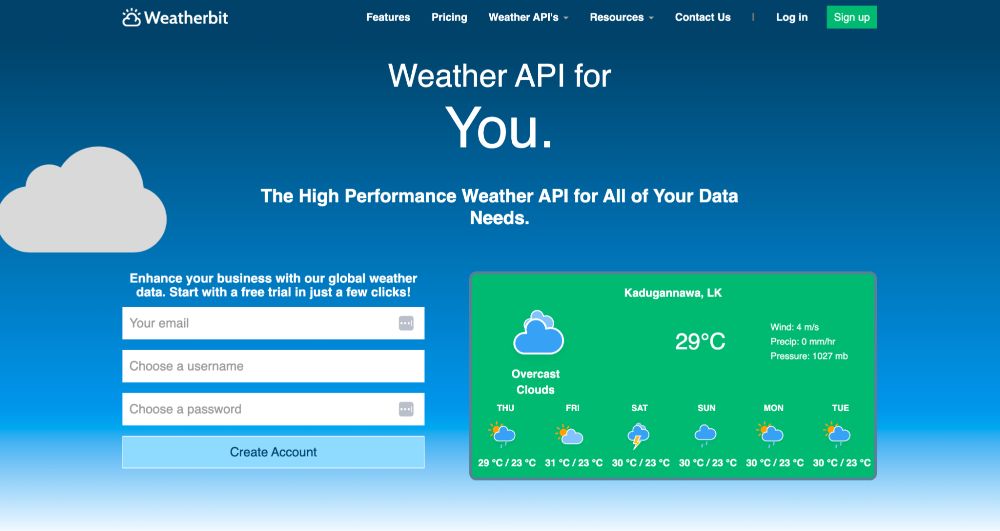
Weatherbit is an API used by both commercial and non-commercial consumers, offering data from a diverse array of locations. In addition to weather information, Weatherbit provides unique data such as air quality, soil temperature, and soil moisture.
Another distinctive aspect of Weatherbit is its utilization of AI and Machine Learning algorithms to forecast the weather accurately.
Moreover, Weatherbit offers additional services, including data analytics, weather visualization, and programming tools. For users, Weatherbit provides a free option that allows 500 API requests per day for a duration of 16 days. Paid options are also available, starting at $40 per month.
5. Accuweather
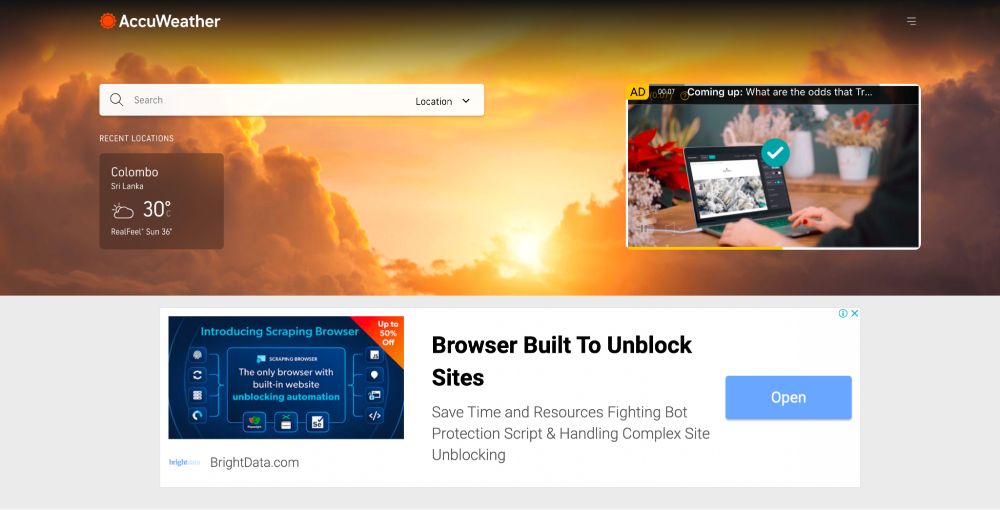
Accuweather is another popular weather API in the market, known for providing detailed imagery data that simplifies the data integration process for developers.
Apart from forecast information, AccuWeather is extensively utilized for weather alerts, location data, and more.
AccuWeather offers a free trial with a limit of up to 50 API requests per day, which is relatively restricted.
Their paid versions start at $25 per month and can go up to $500 per month, depending on the user’s specific requirements.
6. Meteomatics
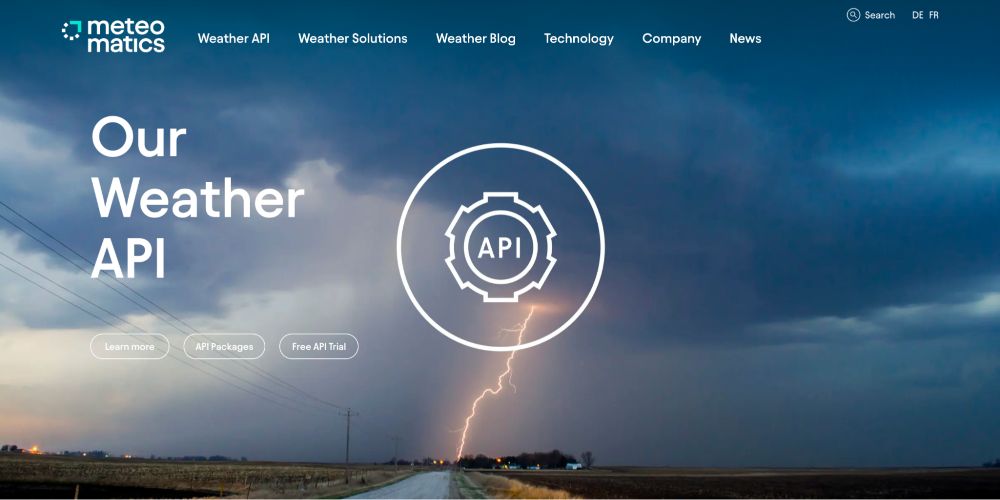
Meteomatics is a cloud-based API that offers data on both weather and climate. It caters to both commercial and non-commercial users, providing them with comprehensive data, satellite imagery, and analytics that can be utilized across various industries.
For non-commercial projects, Meteomatics offers a free package that includes 500 API requests per day. Additionally, they provide a two-week trial period with up to 1000 calls per day, allowing consumers to evaluate the service.
Users have the flexibility to upgrade their plan based on their specific requirements.
7. Visual Crossing

Visual Crossing is a cloud-based weather API that is renowned for providing access to weather data at a low cost. This API is extensively utilized in data science, business analysis, and machine learning applications.
Visual Crossing API offers advanced features and tools, making it an ideal choice for developers and users seeking a powerful yet affordable weather API.
The Visual Crossing Free trial allows up to 1000 API requests per day, with access to 50 years of historical data and a 15-day forecast. Consumers can choose a plan that best fits their requirements, with package options starting at $35 per month.
8. AerisWeather
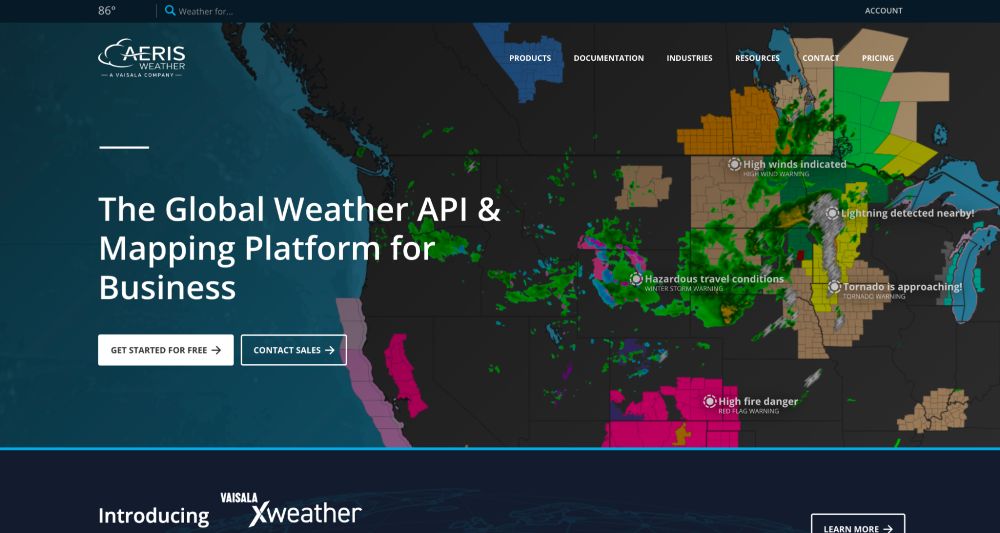
AerisWeather API is a developer-focused solution created by developers themselves to meet the specific needs of developers.
In addition to providing weather data, forecasts, storm reports, air quality information, earthquake warnings, and other weather alerts, the API also offers a wide range of unique datasets.
With AerisWeather API, developers have access to global radar data, alerts, lightning strikes, and various other datasets. These datasets are available in high-resolution formats, making them ideal for seamless overlay within mapping applications. For pricing, AerisWeather API offers packages starting at $300 per month.
9. Foreca
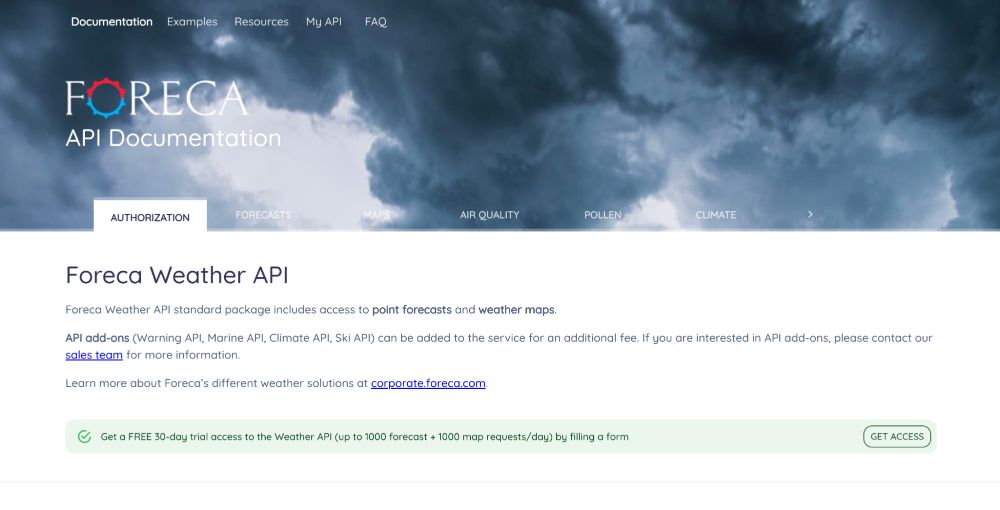
Foreca Weather API offers a range of features to meet your weather data needs. With location-based weather coverage around the globe, you can access accurate and up-to-date forecasts. The API provides observations from representative weather stations near your desired locations, ensuring reliable data sources.
One notable feature is the high-resolution one-hour precipitation forecast, providing detailed forecasts in one-minute intervals. Moreover, Foreca Weather API includes an air quality index that summarizes air pollution levels, keeping you informed about the quality of the air in a specific area.
For additional functionalities, Foreca Weather API offers optional add-ons such as the Warning API, Marine API, Climate API, and Ski API.
10. Weather20/20
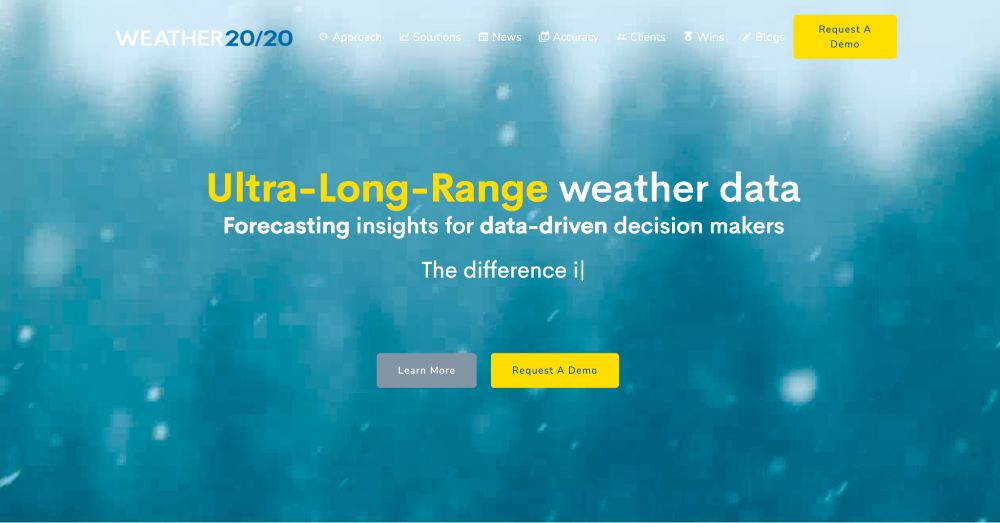
Weather20/20 is also a popular weather API that stands out for its 12-week long-range weather forecasts. It is recognized for its unique methodology, which enables the prediction of severe weather outbreaks, tropical and winter storms, droughts, floods, and more.
When it comes to pricing, Weather20/20 offers a free plan that allows for 1000 API calls per day. Any additional calls beyond this limit incur a charge of $0.002 per call.
For users who require more extensive usage, there is a paid plan available starting from $9.99. Thus, Weather20/20 provides one of the most affordable weather API options on the market.
Conclusion
When it comes to selecting a weather API for your application, the most suitable choice depends on your specific requirements.
In this context, Weatherstack serves as an excellent starting point. By signing up for free and testing their services, you can gain a comprehensive understanding of the features they provide.
Moreover, when selecting a weather API for your application, it is important to assess the reliability and accuracy of the data they offer. It is advisable to choose an API that provides up-to-date information from trustworthy sources.
Also Read: Significance of Oracle Testing for Education Institutions
FAQ
Why should you use a weather API?
Using a weather API becomes crucial when your application or use case requires a substantial amount of weather data.
Where does the data come from?
The data within weather APIs is sourced from weather stations worldwide, as well as National Weather Services, which collect and process the data.
How can you find the best weather API?
Most APIs available in the market offer a free trial or a free service option. By exploring and understanding your requirements and assessing the features provided by each API, you can determine the most suitable weather API for your needs.
How do weather APIs ensure high-performance data delivery?
Weather APIs ensure high-performance data delivery through scalable infrastructure, optimized caching mechanisms, and content delivery networks.